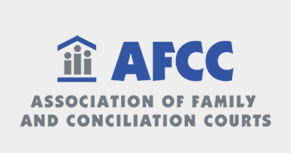
Parenting time and custody examinations are useful tools to aid in settlement, and where cases don’t
settle, they can aid in trial. Upon receipt of a custody and parenting time evaluator’s recommendations,
subpoenaing the evaluator’s file can aid in both. The question is, where do you start evaluating the file?
There is a very natural sequence to examining an evaluator’s file, starting with 1) looking at the
evaluator’s training and experience, moving to their 2) methodology, and finally to their 3) findings and 4)
proffered opinion on the ultimate issue.
Taking on a custody and parenting time matter is not for the faint of heart, and a task that yearns for the
expertise of a professional that has sufficient depth and breadth of applied knowledge in areas that span
a wide swath of relevant domains. These domains include, but certainly are not limited to the
developmental needs of children, parenting and relational capacity, family dynamics, and knowing how to
develop testable hypotheses and establish the reliability of sources of information relied in the family
study. Every review of an evaluator’s work starts with their training and experience. Practice standards
have been developed that outline the scope of training and experience needed, and thus can serve as a reasonable criterion for vetting the qualifications of an evaluator. If there are problems in the work-
product, it might likely be sourced here. Without adequate training and experience, mistakes can be tor relied on to provide their ultimate opinion. Training and experience thus sets the foundation for
the next logical step of the analysis- the methodology.
A generally accepted approach to performing family studies is based in what is often called “multiple
methods of assessment,” which is simply addressing the questions before the court through different
approaches, including interviews, observation, collateral human sources, documentation, and
psychological testing. But that is the least interesting part of a critique. Even further, the use of multiple
methods of assessment, while essential component parts, can create an illusion of thoroughness. In
other words, it isn’t enough. An evaluator must also develop testable hypotheses based on frameworks
for understanding relevant to domains of interest that are supported by the family science literature, be it
in the area of family violence, resist refusal dynamics, escalation of conflict, capacity problems,
supporting the developmental needs of a child/children, and other relevant areas that are of interest to a
family involved in a legal matter. Testing relevant hypotheses through multiple methods of assessment
sets the foundation for the next step of the analysis- the reliability of findings.
Assuming the first two prongs of the analysis are sound- namely the expertise of the evaluator as
evidenced by training and experience, and the methodology as evidenced by sufficient coverage and
testing of relevant constructs- then there is a reasonable chance of the findings being reliable. However,
findings must still be looked at against alternative rival hypotheses, and those that are more likely are
ultimately relied on in formulating the case. A good formulation relies on generally accepted frameworks
of understanding that accounts for the idiographic aspects of a family as to “how” they got to where they
are, “what” within the family system maintains the problems, and what sparks it “when” it happens. This
can lead to a helpful understanding of the findings in order to support a family to resolve their ordeal.
At this point the process it now comes down to the meaning of the findings in terms of the expert’s
proffered opinion on the ultimate issue. I have done family studies in different states, and across
jurisdictions within states. At one level different findings can be handled slightly differently in different
areas of a state governed under different local rules, but I have also been involved in cases where
opinions were offered by an evaluator under laws that didn’t exist save but as relics of the training the
evaluator had undergone in a different state that handled things under different laws. The AFCC model
standards outline that one “shall have” an understanding of the laws applicable to the “jurisdiction in
which the evaluation is requested” in order to optimally support a family and the trier of fact. The
alternative to this is a risk of the evaluator becoming an iatrogenic risk factor to the case itself, such as
through emboldening a party in a case position that might not be supported by law.
There is certainly more that can be said about a file review, and this only covers a skeletal outline. I also
have found that one of the benefits that comes from subpoenaing and reviewing a file is in the peace of
mind a review can provide a party that has so much at stake in the case. In many cases file reviews are
done where there is reasonable suspicion of problems with the work-product. However, not all file
reviews illuminate areas of concern. Where the work product is sound, a good file review can be a
helpful case management tool.





